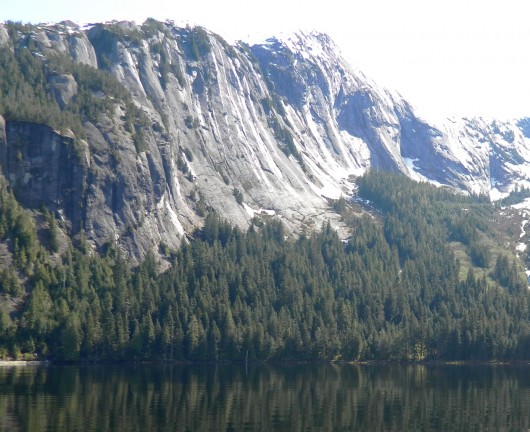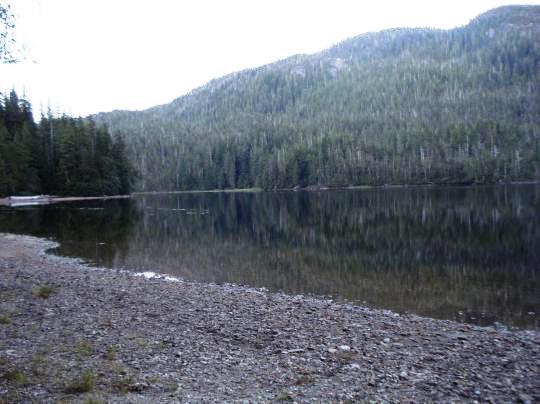
Misty Fiords National Monument is known for its dramatic granite cliffs. Pictured is a view from Rudyerd Bay. (File photo by Leila Kheiry)
Recovery efforts were successful Friday, and rescue crews retrieved the bodies of nine people killed Thursday when a floatplane crashed into the side of a steep mountain in Misty Fiords National Monument outside of Ketchikan.
Eight cruise ship passengers and their pilot died when their flightseeing trip to Misty Fiords ended tragically.
The DeHavilland Otter lost contact about noon that day with its home-base at Promech Air, a Ketchikan-based tour company. The authorities immediately were contacted to start searching.
The plane soon was spotted on a cliff, about 800 feet uphill from Ella Lake — a popular recreation spot with a U.S. Forest Service-maintained cabin. That became the base of operations for the rescue effort.
Chris John is incident commander with Ketchikan Volunteer Rescue Squad. He said weather conditions worked against them the day of the crash, plus the crash site was challenging. They used a helicopter to get as close as possible, then started hiking.
“It took them nearly an hour the first time because of conditions, but also finding the best route across, because the terrain varies from forested area to slides to slippery, muddy slope,” he said. “So, where you’re going across there, you have to gear up for the conditions as you walk along, including sometimes roping up.”
They got to the plane nearly six hours after the initial call, and discovered that everyone on board had been killed.
At that point, it was still raining and starting to get dark. So, rescue crews pulled back and went home to rest and regroup for a recovery effort the next day.
John said crews were back on the scene mid-morning, following a briefing with various response agencies. The weather was better and they already had a route to the site, so this time, it only took about half an hour to hike over to the plane.
Alaska State Troopers identified the victims as pilot Bryan Krill, 64, of Hope, Idaho; and passengers Rowland Cheney, 71, and Mary Doucette, 59, both of Lodi, Calif.; Glenda Cambiaso, 31, and Hugo Cambiaso, 65, both of North Potomac, MD; June Kranenburg, 73, and Leonard Kranenburg, 63, both of Medford, Ore.; and Margie Apodaca, 63, and Raymond Apodaca, 70, both of Sparks, Nevada.
The bodies were taken from the site by helicopter, then transported to Ketchikan by a U.S. Coast Guard boat. From here, they were taken to the state Medical Examiner in Anchorage.
Troopers and the National Transportation Safety Board are working together to investigate the crash. An NTSB team has traveled to Ketchikan, but Spokesman Keith Holloway said it will take a while to determine the cause of the crash.
There is a lot of information that needs to be gathered first.
“Looking at the aircraft, looking to see if there are any fractures on the metal, looking for navigational equipment, to see what the instruments were reading at the time of the accident, any clues that we can gain to find out what may have caused this accident,” he said.
Holloway said the Otter is too small to have a flight data recorder, or “black box,” on board. But NTSB will look into communications between the plane and any air traffic control service on the ground.
He said weather is a possible factor in the crash.
Correction: Rowland Cheney initially had been identified by authorities as Hal Cheney. This report has been updated with the correct information.






